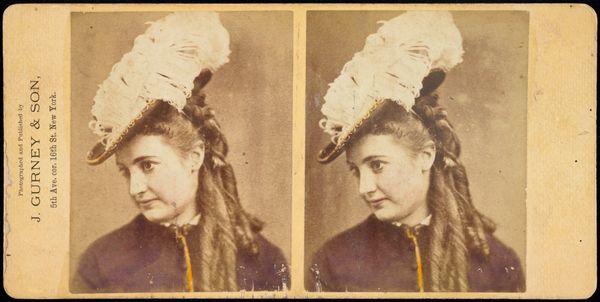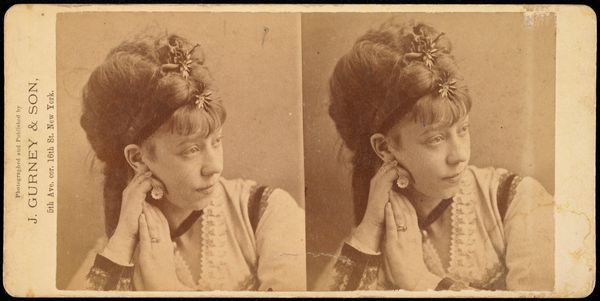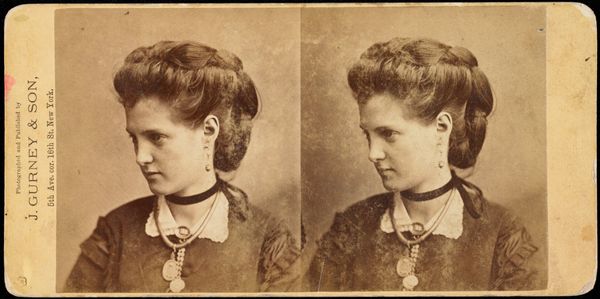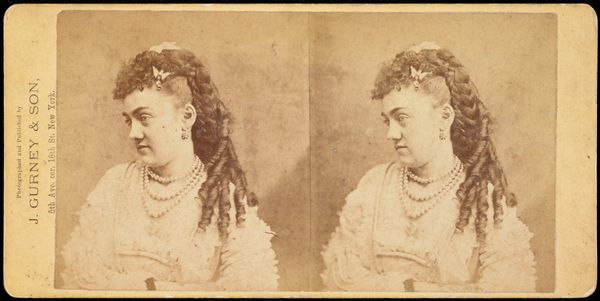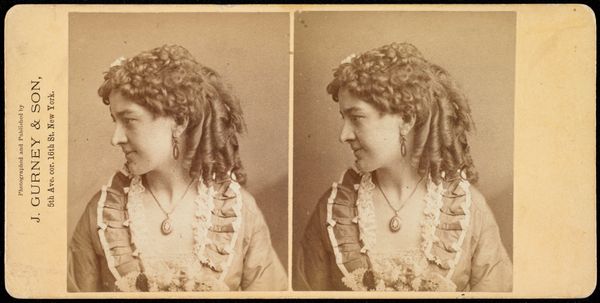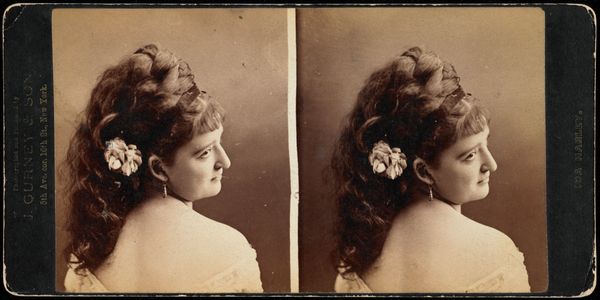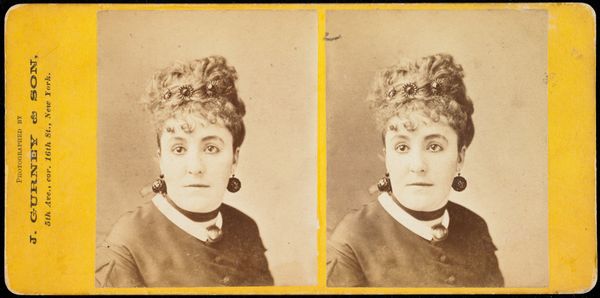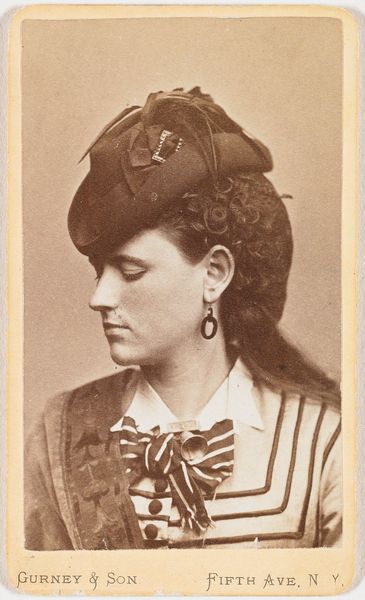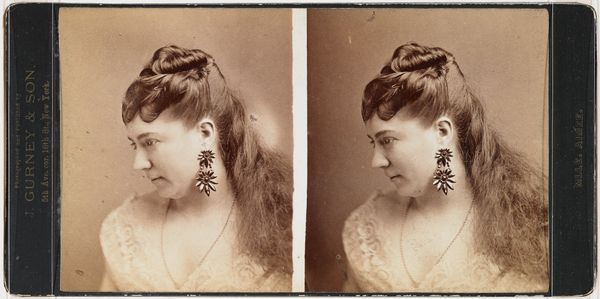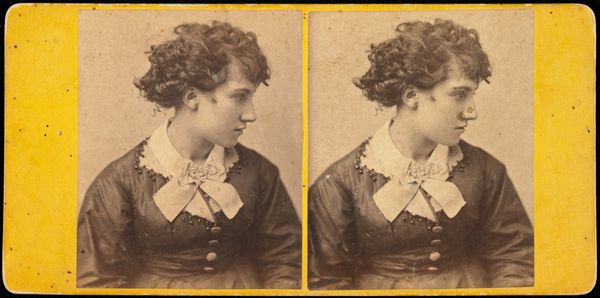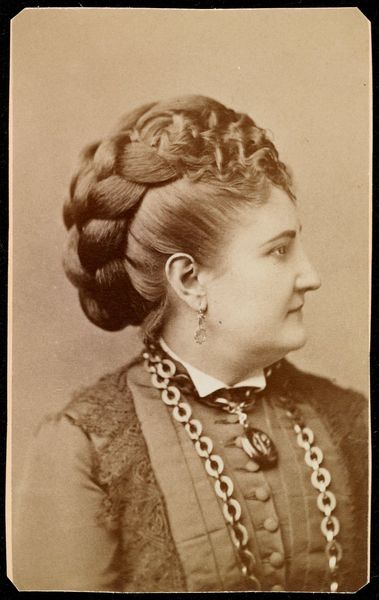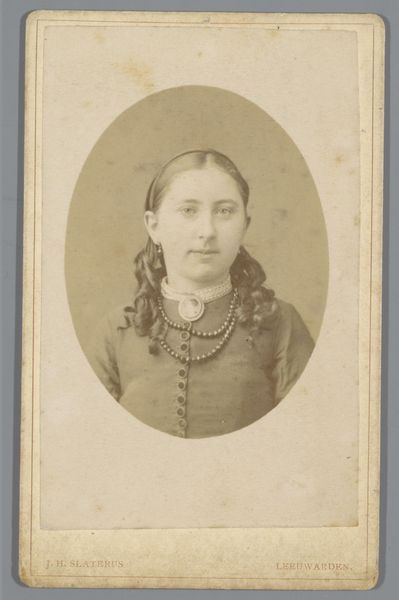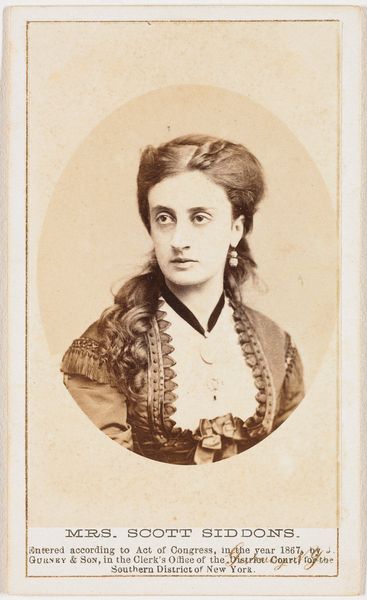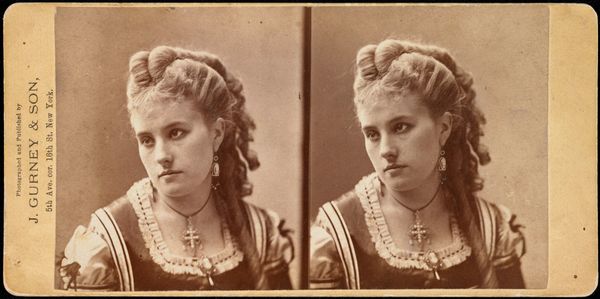
Dimensions: 3 1/4 x 5 7/8 in. (8.26 x 14.92 cm) (image)3 3/8 x 6 7/8 in. (8.57 x 17.46 cm) (mount)
Copyright: Public Domain
Curator: This daguerreotype, residing here at the Minneapolis Institute of Art, presents us with a compelling portrait of Annie Clark. Dating from 1869 to 1874, it's the work of Jeremiah Gurney, a prominent photographer in New York. Editor: Immediately, I’m struck by the subdued palette and the incredibly fine detail rendered by the daguerreotype process. There’s a stillness to it, an almost romantic quality achieved through sharp focus and controlled tonality. Curator: Absolutely. Gurney’s studio on Fifth Avenue catered to a clientele seeking refined portraiture. Beyond just capturing likeness, it provided an opportunity to showcase status through clothing and carefully managed self-presentation. Consider the double image—almost like a flattened 3D! This stereoscopic presentation offered an interesting optical illusion of depth for viewers of the time. Editor: The woman's gaze, averted, seems to imply a dreaminess or an inner thoughtfulness. The costume with all of its layering draws my attention. Notice how the eye is drawn not only to her cameo jewelry but her carefully constructed layered dress. These shapes really bring form to the flat space. Curator: Those sartorial choices are anything but arbitrary. From her elaborate hairstyle to the jewelry and ribbon details of her gown, it suggests a level of social standing. These photographs, duplicated and shared as cards, served to cement social connections and project curated identities. The fact this photograph existed and made its way into institutions speaks of the rising upper middle class. Editor: And yet, even with that constructed presentation, I can't help but feel there’s an inherent tension between the objective accuracy of the photographic process and the desire for romanticized beauty in the Romantic style. Her turned head suggests more of that, she presents in 3/4 view and the lighting catches her at an angle. Very intentional choices indeed! Curator: That tension you describe is quite representative of the era, where technological advancement met artistic ideals. In its time, photography opened representation to a wide array of sitters, even while photographic studios themselves perpetuated the visual norms of the time period. Editor: Well, studying the play of light and shadow across Annie Clark’s face and dress, has certainly given me much to contemplate. It really illustrates how portraiture in any form offers a reflection not just of the subject, but of cultural desires of its time. Curator: Indeed. And in understanding that cultural milieu, we understand this particular moment in American history a little better. The Gurney studio served a society striving for visibility and permanence, and we're fortunate enough to now analyze this preserved sliver of history.
Comments
No comments
Be the first to comment and join the conversation on the ultimate creative platform.
